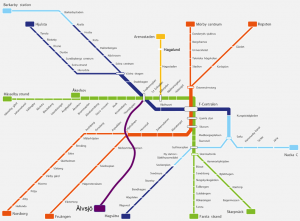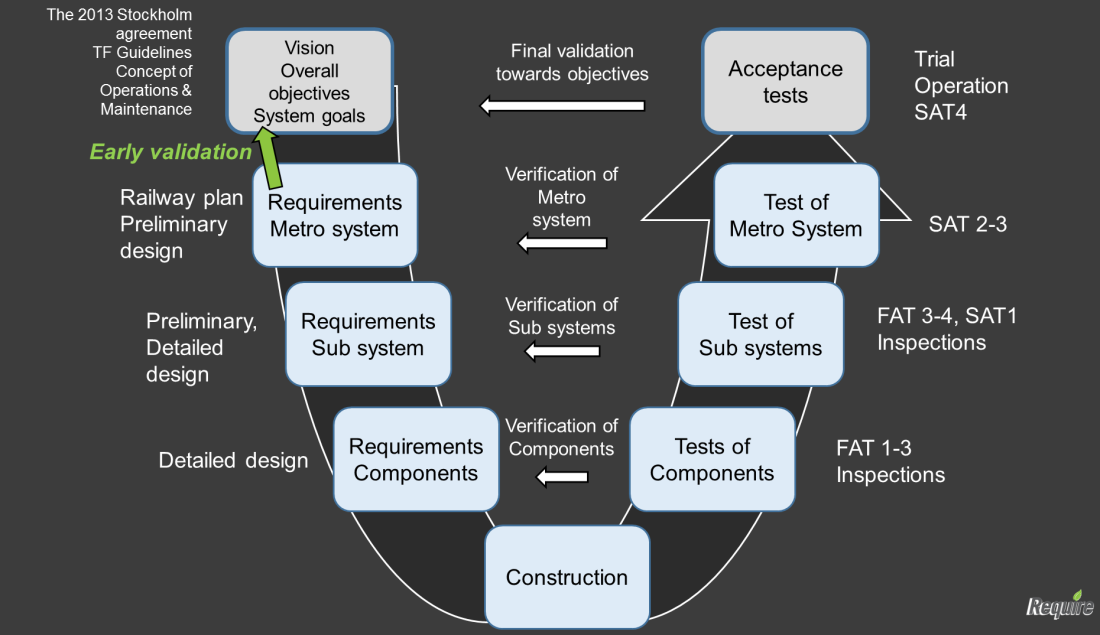
Helsinki area’s Länsimetro (The West Metro) project has been in the news in Finland due to project’s delays. There have been unexpected problems in final testing, especially in putting different systems together. One of the latest issues was with the control room, where 10 control systems have to be functioning without defects (Helsingin Sanomat 5.9.2017).
We at Taipuva do not know the details of how Helsinki metro project is being managed. However, our company had a pleasure of hosting an interesting presentation by Arne Muñoz of Require AB working for Stockholm Metro Extension. Mr. Muñoz explained how requirements management is utilized in the project so that the designs can be seen fulfilling the requirements. Verification and validation shall be done against the requirements, at different levels as described in the figure below (FAT stands for Factory Acceptance Test and SAT stands for Site Acceptance Test, the prior meaning testing of components or sub-systems while the latter is testing the integration at site). By the way, do not misinterpret the picture with the famous waterfall approach. This does not imply anything on project phasing or its iterations.

Today’s transportation systems, infrastructure and buildings rely more and more in automation. Software-intensive systems take over. A variety of systems communicate with each other and with people. That is the reality of Internet of Things (IoT) in a large scale. This makes traditional engineering projects transform into more complex systems engineering projects.
It seems evident that the methods and tools need to change accordingly. The requirements and specification content of how systems shall function together becomes increasingly important. A system break-down into smaller pieces is needed. There is no single vendor or contractor for the whole project, which calls for collaboration – regarding the content, too. The same development can be seen in major public sector projects, e.g. in the development of healthcare information systems. The functionalities of the system need to be specified together, as well as those for subsystems and interfaces.
For such projects, this calls for the following:
– Proper requirements management and identifying individual requirements, not only compiling unstructured documents
– Deriving and tracing requirements into several levels
– Allocating requirements to vendors and contractors
– Having a controlled way of verifying individual requirements, at all levels
Most naturally it should be the orderer of the whole system, who takes care of the process, owns the requirements and sees that the contractors and vendors deliver against the requirements. Modern ALM tools facilitate flexible collaboration and real-time exchange of information between the parties involved, thus operating as agile as possible.
See 30 min video: 4 Easy Steps to Gather, Author, Approve and Manage Requirements
Get Whitepaper: Internet of Things and Industry 4.0 predictions
Get the referred presentation material by Arne Muñoz here.
Book your calendar: Taipuva ALM Solution Day, on April 26th 2018 in Helsinki
Author: Pasi Ahola, Managing Director, Taipuva Consulting Oy